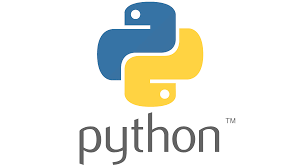
JOIN Clause Of SQL:
Join allows you to combine two or more tables in SQL, based on the related column between them. It’s important to keep in mind that for this operation to work, there needs to be a common column in both tables. Based on this application of join there are three types of join:
- Records produced by matching columns are returned by an INNER JOIN. Both JOIN and INNER JOIN function the same way.Syntax:
SELECT column1, column2...
FROM tablename
JOIN tablename ON condition;- LEFT JOIN gives those records from table 1 removing exclusive contents of 2. Syntax:
SELECT column1, column2...
FROM tablename
LEFT JOIN tablename ON condition;- RIGHT JOIN gives all records from table 2 after removing exclusive records of 1. Syntax:
SELECT column1, column2...
FROM tablename
RIGHT JOIN tablename ON condition;Example: Inner join
import mysql.connector
# Connecting to the database
mydb = mysql.connector.connect(
host ='localhost',
database ='College',
user ='root',
)
cs = mydb.cursor()
# STUDENT and STudent are
# two different database
statement ="SELECT S.NAME from Student S JOIN \
Student on S.Roll_no = Student.Roll_no"
cs.execute(statement)
result_set = cs.fetchall()
for x in result_set:
print(x)
Example: Left join
import mysql.connector
# Connecting to the database
mydb = mysql.connector.connect(
host ='localhost',
database ='College',
user ='root',
)
cs = mydb.cursor()
# STUDENT and STudent are
# two different database
statement ="SELECT S.Name from STUDENT S\
LEFT JOIN Student s ON S.Roll_no = s.Roll_no"
cs.execute(statement)
result_set = cs.fetchall()
for x in result_set:
print(x)
Example: Right join
import mysql.connector
# Connecting to the database
mydb = mysql.connector.connect(
host ='localhost',
database ='College',
user ='root',
)
cs = mydb.cursor()
# STUDENT and STudent are
# two different database
statement ="SELECT S.Name from STUDENT S RIGHT \
JOIN Student s ON S.Roll_no = s.Roll_no"
cs.execute(statement)
result_set = cs.fetchall()
for x in result_set:
print(x)
The above codes will output the result according to the used join type.
Note: also read about Limit Clause – MySQL
Follow Me
Please follow me to read my latest post on programming and technology if you like my post.
https://www.instagram.com/coderz.py/
https://www.facebook.com/coderz.py
Staying up to the mark is what defines me. Hi all! I’m Rabecca Fatima a keen learner, great enthusiast, ready to take new challenges as stepping stones towards flying colors.
Leave a Comment
You must be logged in to post a comment.